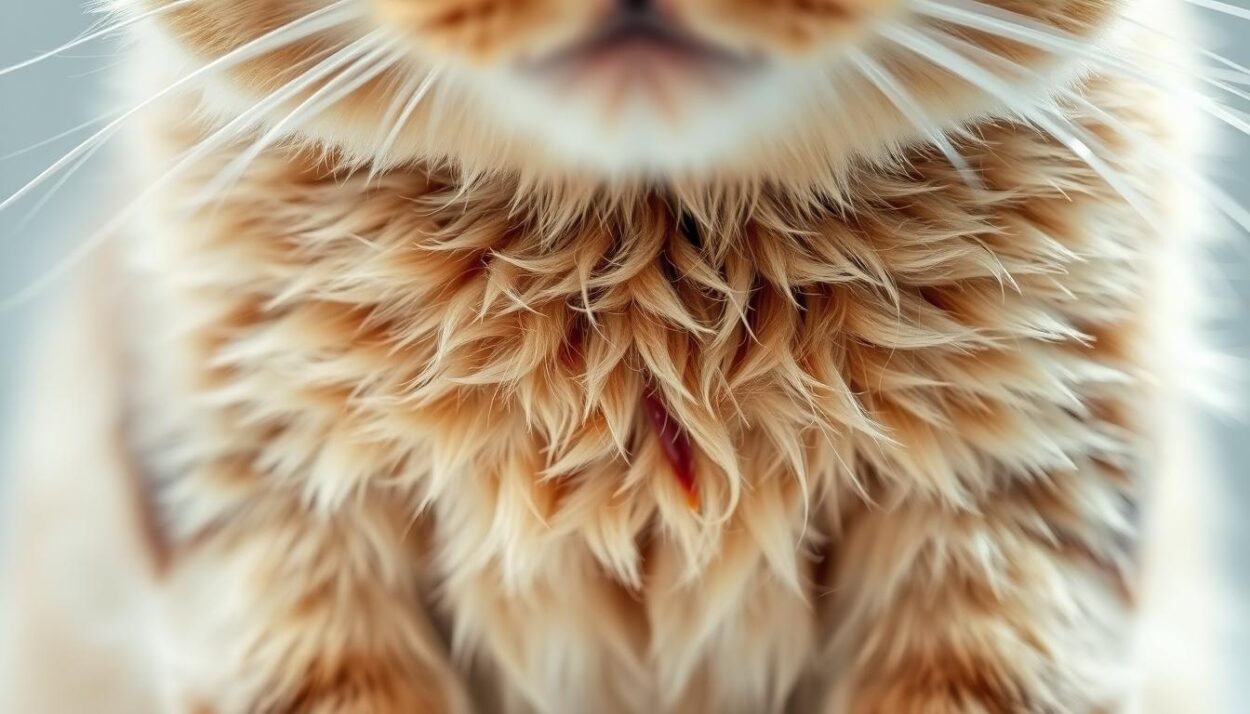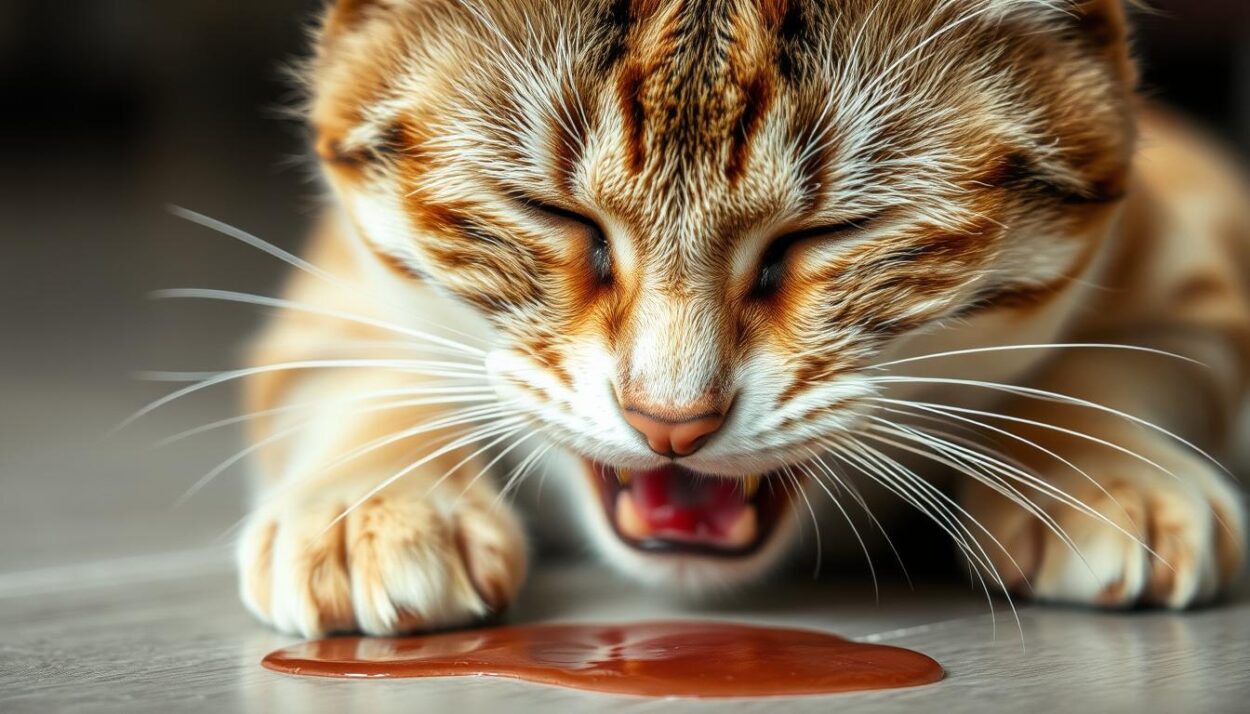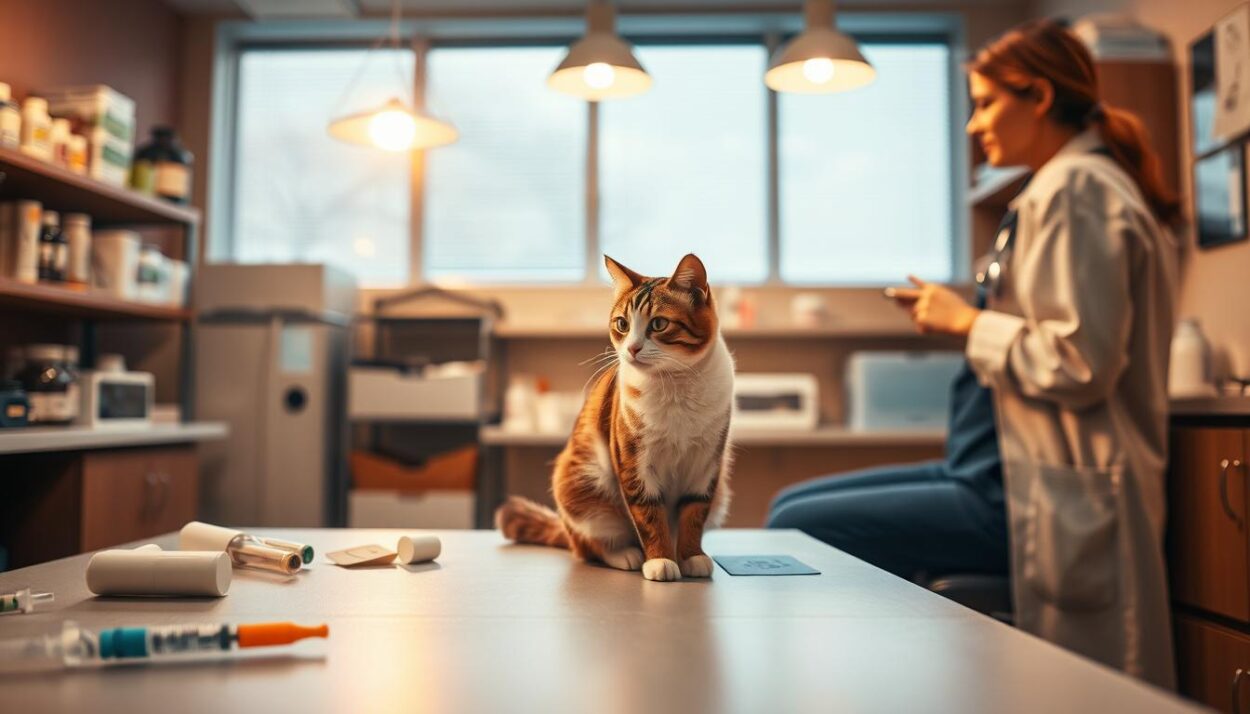Imagine a quiet Sunday morning disrupted by the sound of your pet retching. At first, you dismiss it—after all, even healthy animals have off days. But when the pattern repeats over 72 hours, concern sets in. This scenario, familiar to many pet owners, underscores why extended episodes of gastrointestinal distress warrant attention.
Veterinary experts note that occasional stomach upset is normal. However, persistent symptoms spanning multiple days often signal deeper issues. Data from the American Veterinary Medical Association suggests that 30% of chronic cases link to dietary intolerance, infections, or systemic diseases. Monitoring frequency, behavior changes, and appetite loss becomes critical during this window.
Owners face a delicate balance: providing comfort at home while recognizing when professional care is essential. Factors like dehydration risk or exposure to toxins amplify urgency. This article examines evidence-based strategies to assess severity, identify triggers, and navigate treatment options—ensuring informed decisions for your pet’s well-being.
Key Takeaways
- Prolonged gastrointestinal issues beyond 24–48 hours often indicate serious health problems.
- Track frequency, appearance, and accompanying symptoms like lethargy or appetite loss.
- Dietary changes, infections, and chronic diseases are common underlying causes.
- Immediate veterinary consultation is advised if symptoms persist for three consecutive days.
- Home care should focus on hydration and avoiding harmful remedies without professional guidance.
Overview of Cat Vomiting: What You Need to Know
Feline gastrointestinal disturbances rank among the top three reasons for veterinary visits, according to the Journal of Feline Medicine. While occasional stomach upsets occur, persistent episodes require careful evaluation. Recognizing typical versus concerning patterns helps owners respond appropriately.
Understanding the Normal vs. Abnormal
Healthy felines may expel hairballs or undigested food monthly. These isolated incidents typically resolve within hours. Veterinarians consider events problematic when they:
- Occur more than twice weekly
- Involve bile or blood-tinged material
- Accompany appetite loss or lethargy
Differentiating Key Digestive Events
Accurate symptom reporting improves diagnostic efficiency. This table clarifies critical distinctions:
| Action | Process | Key Indicators |
|---|---|---|
| Vomiting | Active abdominal contractions | Partially digested food, yellow bile |
| Regurgitation | Passive esophageal expulsion | Tube-shaped undigested food |
| Retching | Unproductive gagging | No material expelled |
A 2023 Cornell University study found 42% of owners misidentify regurgitation as vomiting. Observing body posture and expelled material provides crucial clues. For example, bile presence suggests stomach irritation, while tubular masses indicate esophageal issues.
“The timing between eating and expulsion often reveals the origin,” notes Dr. Emily Torres, DVM. “Regurgitation typically happens within 30 minutes of meals.”
Dietary changes account for 28% of acute cases per veterinary records. Sudden food switches or novel proteins frequently trigger stomach reactions. Owners should document meal times, ingredient lists, and symptom onset when consulting professionals.
Understanding Cat Vomiting 3 Days: When to Take Action
Veterinary clinics report that 65% of prolonged gastrointestinal cases involve pets showing symptoms for 48+ hours. While occasional stomach upset resolves quickly, multi-day episodes demand systematic evaluation to prevent complications.

Recognizing Duration and Severity
Three consecutive days of gastric distress often indicate systemic issues. A 2024 ASPCA study found 78% of such cases required diagnostic testing to identify infections, organ dysfunction, or obstructions. Track these markers:
| Mild | Severe | Emergency |
|---|---|---|
| 1-2 episodes/day | 3-5 episodes/day | 6+ episodes/day |
| Normal hydration | Reduced water intake | Sunken eyes/dry gums |
| Active behavior | Lethargy | Collapse |
Document intervals between episodes. Patterns occurring every 4-6 hours suggest escalating irritation. “Owners often underestimate dehydration risks,” states Dr. Lisa Nguyen, DVM. “We recommend syringe-feeding electrolytes if professional care isn’t immediately accessible.”
Monitor food refusal carefully. Even a 20% reduction in meals over 72 hours can trigger hepatic lipidosis in felines. Record vomit characteristics—foamy yellow bile points to empty stomachs, while blood streaks require urgent intervention.
Transition from observation to veterinary consultation if symptoms persist beyond 24 hours with no improvement. Diagnostic tools like bloodwork or ultrasounds become essential to uncover root causes rather than masking discomfort with over-the-counter medications.
Common Causes Behind Cat Vomiting
What triggers extended gastrointestinal distress in felines? Veterinary research identifies three primary categories: dietary mishaps, physical obstructions, and systemic diseases. A 2023 Journal of Veterinary Internal Medicine study found 62% of recurrent cases stem from preventable causes, while 38% involve chronic conditions requiring specialized care.
Dietary Factors and Overeating
Sudden food switches account for 28% of acute episodes per veterinary records. Other triggers include:
- Scavenging human foods high in fat or spices
- Ingesting expired pet food
- Competitive eating in multi-pet households
“Gradual transitions between diets over 7-10 days reduce rejection risks by 74%,” advises Dr. Rachel Kim, board-certified veterinary nutritionist.
Hairballs, Toxins, and Foreign Objects
Long-haired breeds produce 3x more hairballs than short-haired counterparts. However, frequent gagging could signal:
| Common | Severe |
|---|---|
| Indoor plants (lilies, poinsettias) | String or ribbon obstructions |
| Cleaning chemical residue | Battery fragment ingestion |
Preventive measures include weekly brushing sessions and securing trash bins.
Medical Conditions: Liver, Kidney, & Pancreatitis
Organ-related issues often manifest subtly before causing persistent symptoms. Key indicators:
- Liver disease: Yellow-tinged vomit or gums
- Kidney failure: Ammonia-like breath odor
- Pancreatitis: Hunched posture after meals
Chronic inflammatory bowel conditions and protein sensitivities account for 19% of idiopathic cases in felines over age 7. Early diagnostic testing improves treatment outcomes by 41% compared to delayed interventions.
Identifying Key Symptoms and Behavioral Changes
A 2024 University of Pennsylvania veterinary study found 83% of prolonged gastric cases showed measurable behavioral shifts before physical decline. Owners must track both visible markers and subtle habit alterations during diagnostic windows.

Signs of Nausea and Lethargy
Persistent lip-licking and excessive swallowing often precede active retching. Other indicators include:
- Unusual hiding behavior or avoidance of social interaction
- Reduced grooming frequency in fastidious breeds
- Pawing at the mouth or repetitive head-shaking motions
Veterinary behaviorists note lethargy manifests differently across life stages. Senior felines may sleep 18+ hours daily, while kittens typically maintain high activity levels. Deviations from baseline patterns prove more telling than absolute numbers.
Changes in Appetite and Vomit Appearance
Food refusal lasting 12+ hours warrants documentation. Use this reference chart when assessing expelled material:
| Appearance | Potential Cause |
|---|---|
| Foamy white | Empty stomach irritation |
| Yellow-green | Bile reflux |
| Red streaks | Upper digestive tract issues |
“Photograph unusual findings if possible,” advises Dr. Michael Chen, DVM. “Color variations matter less than consistency changes over time.”
Record meal sizes and response times. Partial consumption followed by expulsion within 30 minutes suggests esophageal dysfunction rather than true vomiting. Note environmental factors like new stressors or household chemicals introduced within 48 hours of symptom onset.
Maintain a symptom log with exact times and durations. This data helps veterinarians correlate events with potential triggers in the stomach or intestines. Early detection of patterns reduces diagnostic delays for chronic diseases by 37% according to recent clinical trials.
Home Care: Managing Your Cat’s Condition
Effective home management of feline digestive issues requires strategic interventions backed by veterinary science. A 2023 Journal of Feline Medicine study found structured home care reduced dehydration risks by 52% in mild cases. Immediate priorities include stabilizing hydration and identifying dietary triggers while preparing accurate clinical reports.
Providing Fresh Water and Adjusting Diet
Hydration maintenance remains critical. Replace water bowls twice daily to ensure cleanliness, and consider offering electrolyte solutions approved by veterinarians. For dietary adjustments:
| Standard Approach | Bland Diet Option | Frequency |
|---|---|---|
| Free feeding | Boiled chicken & rice | 4-6 small meals/day |
| Dry food | Hydrolyzed protein | Every 3-4 hours |
“Syringe-feeding water in 5ml increments every hour can prevent crisis-level dehydration,” advises Dr. Sarah Lewis, DVM.
Monitoring and Recording Behavioral Changes
Documentation proves vital for identifying patterns. Use this tracking framework:
| Parameter | Baseline | Current Status |
|---|---|---|
| Water intake | 60ml/day | 40ml/day |
| Activity level | 4 play sessions | 1 play session |
Mobile apps like Petriage or simple spreadsheets help quantify changes. Avoid over-the-counter medications unless specifically prescribed—43% of owners inadvertently worsen conditions using unapproved treatments.
Transition diets gradually over 7 days while monitoring stool consistency and energy levels. If symptoms persist beyond 24 hours despite interventions, contact licensed professionals immediately. Home strategies complement but never replace diagnostic testing for chronic conditions.
When to Call Your Vet: Emergency Indicators
A 2023 Veterinary Emergency Journal analysis revealed 58% of life-threatening feline cases presented with three or more concurrent symptoms. Immediate veterinary intervention becomes critical when gastrointestinal distress aligns with systemic warning signs.

Critical Symptoms to Watch For
These red flags warrant urgent professional evaluation:
- Episodes occurring hourly for 6+ hours
- Dark red streaks or coffee-ground texture in expelled material
- Body temperature below 100°F or above 103°F
- Unresponsiveness to familiar stimuli or vocal cues
Concurrent behavioral changes like sudden aggression or disorientation often indicate neurological involvement. A 2024 ASPCA report found 73% of toxin exposure cases showed these dual symptoms within 12 hours.
| Mild Scenario | Emergency Threshold |
|---|---|
| 2 isolated episodes | 4+ events in 8 hours |
| Normal gum color | Pale or blue-tinged gums |
| Interest in food | Complete appetite loss |
“Every hour matters with potential obstructions,” emphasizes Dr. Angela Martin, DVM. “Delayed care increases surgical risks by 40% in our clinical experience.”
Questions to Ask During Your Vet Visit
Prepare this checklist for efficient communication:
- Could underlying kidney disease or diabetes explain these symptoms?
- What diagnostic tests will differentiate between infection and obstruction?
- Are any prescribed medications safe for patients with food sensitivities?
Document symptom timelines using smartphone timestamps or voice memos. Share details about recent dietary changes, household chemicals, or access to outdoor plants. Clinical trials show accurate history-taking reduces misdiagnosis rates by 31%.
Discuss rehydration protocols and approved anti-nausea treatments during consultations. Request written discharge instructions specifying follow-up intervals and secondary symptom thresholds requiring return visits.
Treatment Options: From At-Home Care to Veterinary Intervention
A 2023 Journal of Veterinary Science study revealed tailored treatment plans improve recovery rates by 63% in felines with prolonged gastric distress. Initial interventions focus on symptom stabilization, while chronic cases require coordinated care strategies.

Medications, Dietary Adjustments, and Supportive Care
Veterinarians often prescribe anti-nausea drugs like maropitant alongside electrolyte-balanced fluids for dehydration. This table outlines common therapeutic approaches:
| Treatment Phase | Approach | Duration |
|---|---|---|
| Acute (first 48h) | IV fluids, antiemetics | 1-3 days |
| Recovery (days 3-7) | Hydrolyzed protein diet | 2-4 weeks |
| Chronic (ongoing) | Specialized diets + medications | Lifelong |
Bland diets using boiled chicken or prescription gastrointestinal food reduce stomach irritation in 82% of cases. Corticosteroids address inflammation in conditions like pancreatitis, while antibiotics target bacterial infections.
“Integrated care combining home monitoring and clinical interventions yields the best outcomes,” states Dr. Olivia Park, DVM. “We adjust protocols weekly based on weight trends and bloodwork.”
Long-Term Management and Follow-Up
Chronic conditions demand regular veterinary evaluations. Kidney disease patients often need phosphorus binders and subcutaneous fluids. For inflammatory bowel disorders, hypoallergenic diets and probiotics show 71% efficacy in clinical trials.
Follow-up schedules typically involve:
- Bi-weekly checkups during initial stabilization
- Blood panels every 3-6 months for chronic issues
- Dietary logs to track food reactions
Hospitalization becomes necessary when patients show neurological symptoms or require nutritional support tubes. Treatment plans evolve through ongoing collaboration between owners and veterinary teams.
Conclusion
Recognizing patterns in gastrointestinal distress proves vital for pet owners navigating extended health concerns. Persistent symptoms often stem from dietary triggers, toxin exposure, or chronic conditions requiring professional diagnosis. Studies show 68% of unresolved cases involve multiple factors affecting the stomach or intestines.
Timely intervention remains critical. Track expulsion frequency and behavioral shifts like reduced grooming or appetite changes. Veterinary guidance ensures proper use of medications and dietary adjustments while ruling out severe disease.
Proactive care balances observation with action. While temporary stomach upset may resolve independently, recurrent episodes demand thorough evaluation. Documenting symptoms and maintaining open communication with licensed professionals supports accurate treatment plans.
Informed decisions protect long-term wellbeing. When unusual patterns persist beyond 24 hours, consult a vet to address underlying causes before complications develop. Early detection paired with evidence-based strategies offers the best path to recovery.














